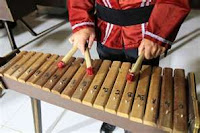

Although impressed by the ancient, the style of the past residential architect is still much demand. In addition to a unique form, residents can also maintain links with its past occupants.
In the middle of the trend of modern minimalist house model, the presence of tempo style building would be something exotic and unique. No wonder that many home-style "old school" is still maintained. In fact, there is also a distinguished old-fashioned on purpose to build this house. Memories of the past or the interests of people with the architectural style of the past, usually one of the reasons this model to build a house.
Then, the concept of the architect's house as what I used for which type of housing like this. According to the architect's house Hindarto Probo, the concept of building long ago normally associated with the concept of home-style Dutch architect who is a kind of architectural "modern" in his day. The design presents the typical shape of Europe especially the Netherlands, like the art deco architecture.
Probo mention, model building can be seen from the characteristic types of architectural designs which use a lot of trim profiles as a game of decoration on the wall. Form window is made large and uniform, and the character of the building which was "cold" because the ceiling and the roof is designed high enough. So even in its interior, the building is very consistent. The building used to use a Dutch artisan-made tiles with interesting motifs. It is rarely encountered.
When viewed from the character, this building type is the type who use thicker walls. Houses of this type also has a game-benangan benangan which expose the firm and more architectural detail and more thoroughly. So even a very sturdy building structure as supported by thick walls and massive reply. Meanwhile, for doors and windows, the house model using good quality material with which the size of the giant or higher with careful handling of detail reply. No doubt, it is very prominent Dutch building in all aspects of the arrangement of space layout, facade structures, and utilities.
Even so, still, in its application should be appropriate and fitting to the eye. Well, its application to the right, of course, through the design process which should be good. For example, Probo said, usually form the windows are made uniform in all parts of the house. Other things, such lis wall decor profile, usually a layer of rocks exposed on the walls using a bottom wall, and so on. Similarly, when the occupants of applying furniture and accessories.
Who of old furniture or old school style also influenced architecture was thriving, the de Stijl, Art Nouveau, Art Deco, and so forth. Each have a characteristic style of design. For example, de Stijl, similar to the style of minimalist modern architecture today. Art Nouveau style uses ornate tendrils. The art deco garisgaris many uses as decorative elements.




